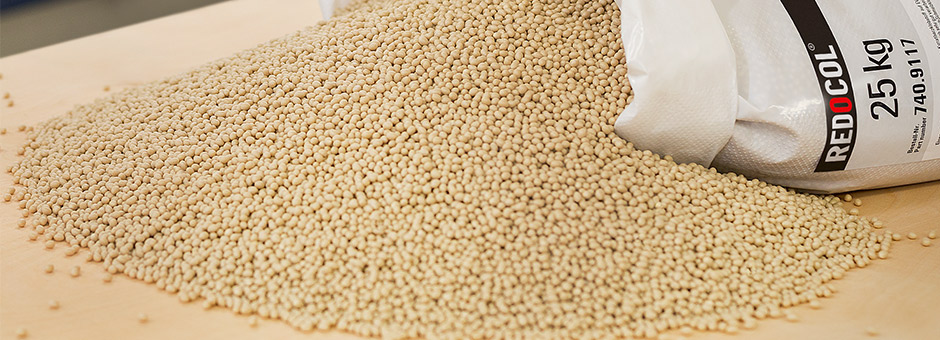Fundamentals - glues and adhesives

Our experts are always available to offer advice and support for carpenters/cabinet makers.
EVA and PUR hotmelt adhesives are used for bonding both plastic and wood edgings. Both adhesives are based on plastic: EVA hotmelt on Ethylene-Vinyl Acetate ("EVA") , while PU/PUR hotmelt is based on polyurethane ("PUR"). Using EVA hotmelt adhesive for bonding edgings is still the most common method. EVA hotmelt is reactivated through the application of heat. This means that EVA adhesives may lose their rigidity when exposed to higher temperatures, such as in the vicinity of a kitchen hob. If the joints need to be particularly water or heat resistant then OSTERMANN recommends using PUR adhesive as this has a significantly higher water and heat resistance than EVA, because PUR hotmelt adhesives are chemically cured, meaning they cannot be reactivated. This prevents the joint from rupturing at high temperatures.
Discover the range of hotmelt adhesives
Special Tip: When using EVA adhesives, the hotmelt adhesive pot and the machine must always be cleaned when switching between light and dark colours.
The application of PUR adhesive is now almost as simple as using EVA hotmelt. PUR hotmelt adhesives can be processed by the majority of modern, conventional edge banding machines. However, the processing temperature is clearly significantly lower here. Machines left at a standstill for a longer period of time, such as over the weekend, must be cleaned with a suitable PUR cleaner. Because once the adhesive has cured, unlike EVA adhesive, it will not melt again. What at first sounds complicated is actually relatively straight forward in practice. Cleaning is not necessary for shorter downtimes, such as overnight shut-downs or if EVA hotmelt adhesives are again processed by the machine directly following the PUR hotmelt adhesive. Modern glue tanks and gluing systems specially designed for PUR hotmelt adhesives, and which can be stored in special storage tanks, actually prevent the adhesive curing over a period of days.
Special Tip: For the gluing of aluminium edges OSTERMANN always recommends the use of PU / PUR adhesive.
The DIN EN 204 is a classification of thermoplastic wood adhesives for non-structural applications and is carried out by the German Institute for Standardization e. V. The classification is done by the German Institute for Standardization e. V. Depending on the water resistance, wood glues are divided into stress groups D1 to D4. D1 glues are only suitable for compounds in dry interiors. D4 interior bonds can come into contact with running or condensed water and with adequate surface protection even to the exterior weather. Most glues achieve a durability class according to DIN EN 204 of D2 or D3. In conjunction with some hardeners D3 glues reach the durability group D4.
In carpentry there are a variety of applications where glue is needed. Depending on the application or the manufacturer it could be called assembly adhesive, bench glue, hardwood glue, etc. It is traditionally on the workbench and is always at hand. Assembly adhesive can also be used universally. Due to its relatively short open time it sets quickly and is also used for rapid surface bonding. Hard wood glue is particularly suitable for highly stressed bonding, e.g. for gluing of seating furniture and frames. Veneer glues adhesives are optimised for veneering in a hot press and lacquer glue for gluing of wood or wood-based materials with difficult surfaces, such as lacquer.
Special tip: lacquer glue is also good for bonding moldings to painted and plastic surfaces. Sanding is not normally required.
You are looking for more tips from our experts? Have a look at the following pages:
 English
English